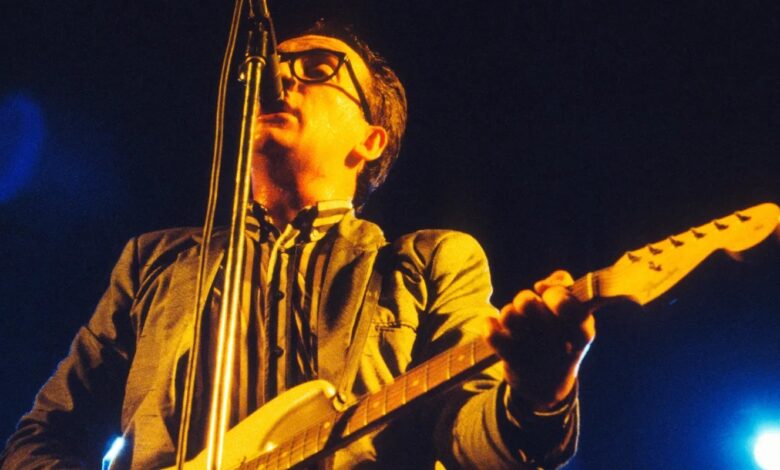4 of Elvis Costello’s Best Albums to Celebrate His New Tour, According to the Biggest Fan I Know

Elvis Costello is going out on tour in 2025 for a special showcase of his early work. He’ll be pulling the setlist from albums made between 1977 and 1986, starting with My Aim is True and ending with Blood & Chocolate. Costello will make stops in Seattle, San Francisco, Los Angeles, Las Vegas, Nashville, and other big cities along the way. To celebrate his new tour, here are four of his best albums from that time period. As a special treat, they’ve been ranked and annotated by the biggest Elvis Costello fan I know—my dad.
Between 1977 and 1986, Costello put out 11 albums. He worked with well-known producers like T Bone Burnett, Geoff Emerick, and Billy Sherrill. Most notably he worked with Nick Lowe on his first five albums. The albums start out as strictly solo Costello on My Aim is True, but he adds his band The Attractions after 1977. From there, Costello worked with Steve Nieve on keys, Bruce Thomas on bass, and Pete Thomas on drums for the remaining 10 albums in that era.
This Year’s Model, 1978
According to my dad, Elvis Costello’s first three albums are some of his best—My Aim is True in 1977, This Year’s Model in 1978, and Armed Forces in 1979. These albums established his “punk and new wave” sound and his “angry young man sensibilities.” The first choice in this list was This Year’s Model. This album “featured a spirit of energy and collaboration among Elvis, his bandmates, and the producer/engineer team of Nick Lowe and Roger Bechirian that was probably unmatched in their time together.”
This album also features the controversial song “Radio, Radio.” The song was Costello’s “middle finger to the broadcasting industry at the time, the performance of which in December 1977 got him banned from SNL for over a decade.”
Trust, 1981
Trust was an expansion of Elvis Costello’s musical palette, says my dad. It followed the soul and R&B-flavored record Get Happy, building on that sound and “foreshadowing his future collaborative forays beyond pop and rock into country, Americana, jazz, classical, hip-hop, R&B, and more.” Trust continued Costello’s penchant for writing about relationships or politics, particularly in the song “Big Sister’s Clothes.” According to my dad, the song’s meaning “could be girls’ desire to grow up too fast, or the state of superpower geopolitics in the early 80’s, depending on who you ask.”
Elvis Costello is a wordsmith first and foremost, crafting clever double meanings, imagery, and metaphor. The musicianship bolsters the lyrics, creating cohesive projects that spark conversations, consideration, and, occasionally, controversy.
Imperial Bedroom, 1982
Imperial Bedroom was engineered by Geoff Emerick, who worked on The Beatles’ Revolver, Sgt. Pepper, and Abbey Road albums. Here, Costello shed his angry young man persona and wrote more personal songs that put his vocals front and center. The introduction of complex composition and orchestration, as well as previously unused instruments, marked a move forward for Elvis Costello and The Attractions. This album followed the country cover departure Almost Blue, which diehard fans felt was a bit of a betrayal. Says my dad, “All in all, Imperial Bedroom is the welcome return of Elvis Costello and the Attractions after the detour of Almost Blue, while being a big leap forward at the same time.”
King of America, 1986
King of America began Elvis Costello’s working relationship with producer T Bone Burnett. He brought life to Costello’s interpretation of American roots music. Apparently, this album hit home with fans who hadn’t liked Almost Blue. This was to the production value as well as the fact that the songs were all Costello originals. King of America brought Costello into the fold of Americana music, translating his wide appreciation for genre into a roots album that worked.
As an honorable mention, my dad added Blood & Chocolate from 1986, which brought back Nick Lowe as producer. “It features the creepy, stalky six-and-a-half minute ‘I Want You’, which Elvis played as an encore at Great Woods in Mansfield Center, Massachusetts during his 1989 tour, with me in attendance,” says my dad. In conclusion, “It was an amazing 28-song, two-and-a-half-hour set.”



